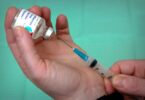Neurodegenerative diseases, such as ALS and stroke, often result in lack of motor function. It becomes challenging for people with these conditions to lift an arm or simply move. But, bioengineers at Harvard have been working on an AI robot that people with upper limb disabilities, as a result of neurodegenerative diseases, can wear, reports Ann J. Manning for Harvard School of Engineering. It helps them move, while improving their mobility.
The challenge in designing the mobility robot is that people move in different ways, particularly people with neurodegenerative diseases. So, the goal is a wearable robot that can work with the individualized movements of any given person. People in need of assistance moving are then better able to undertake activities of daily living like eating and toiletting.
The AI wearable robot improves quality of life. How does it work? The person wears a vest that has an inflatable balloon under the arm. The balloon helps them to lift their arms. Among other things, it can help the person eat and drink. Sensors then track the movements that the person is trying to accomplish.
Sensors also track the pressure people need both to raise their arms and release them after raising them. The device ensures people only get the degree of assistance they need. As a result, people continue to use their muscles to the extent they can and, in the process, maintain muscle strength.
The machine is still in its testing phase. The hope is that before long people will be able to use it in their homes. You can read the research findings in Nature Communication. Check out this video to watch the robot in action:
Here’s more from Just Care:










